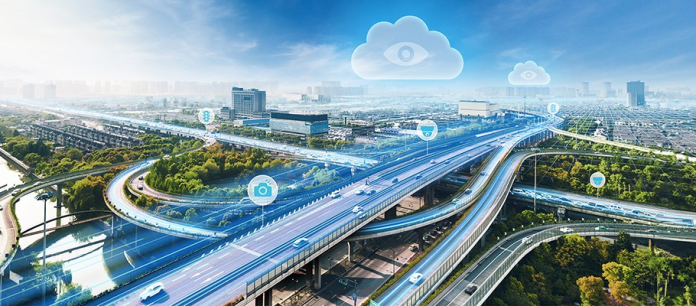Courtesy: Moxa
Overview
In an increasingly urbanized world, cities must find innovative solutions to overcome a growing number of challenges. Traffic congestion, longer commutes, and increased CO2 emissions—highlighted by the high traffic indices reported each year are just some of these challenges that need to be tackled. Adopting futureproof traffic management technologies is the key to effectively address these issues. These innovations not only pave the way for rapid urban expansion but also enable the transition to genuine smart cities.
Let’s take the City of Lancaster in California, as an example. They had an ageing infrastructure that prevented secure and centralized traffic control. By implementing robust infrastructure and centralized network management, the city now actively monitors traffic, incidents, and road users, providing real-time insights to manage traffic efficiently. This greatly improved response times for necessary repairs while minimizing disruptions to the public. Moreover, it has reduced the dependence on human intervention by an impressive 67%, easing workloads.
Smart traffic operations undeniably require networks that are futureproof, reliable, secure, and simplified in management. Hence, simplified network management software is crucial to streamline network operations, reduce maintenance, and enhance safety. Let’s explore two specific intelligent transportation system (ITS) applications and see how simplified network management helps overcome challenges.
Securing Communications for Traffic Signals
A U.S. county upgraded its existing closed-loop traffic signal control system by centralizing traffic management and securing the traffic communication system. However, the integration process came with two challenges:
- Complex Integration: Integrating a closed-loop system with modern smart city infrastructure can be complex. Issues with compatibility, legacy hardware, and software limitations may make it extremely difficult to seamlessly integrate new technologies and centralized control.
- Maintenance and Support: The extensive network infrastructure requires ongoing maintenance and support. Troubleshooting and repairing network equipment over a wide area can be expensive and time-consuming. Successfully responding to equipment failures or system issues, especially in remote or hard-to-reach locations, presents logistical challenges that must be addressed.
The key to their success was using futureproof network management software that made maintenance more efficient. Specifically:
- Simplified network management software enables engineers to quickly detect and resolve network problems at traffic sites, improving maintenance and traffic efficiency.
- Visual representation of the entire network topology and status, including routers, switches, servers, and connected devices, allows administrators to see the layout and interconnections of the network immediately. This visual insight not only enhances network management but also offers several advantages for addressing compatibility issues and integrating legacy hardware effectively.
Retrieving Accurate Data for Automated Toll Collection
After successfully addressing effective and secure communications for traffic signals, we are now shifting our attention to automated toll collection. We will showcase the significance of futureproof networking in accurate and efficient toll collection to enable smooth-flowing highway traffic.
Automatic toll collection allows drivers to pay without stopping at manned toll booths, reducing traffic congestion on highways. To bill the correct driver, automated toll collection systems rely on accurate, real-time data about fast-moving vehicles. In turn, accurate data collection relies on network infrastructure that provides remote management and high bandwidth.
Centralized managing and configuring network devices remotely reduces the need for on-site maintenance and decreases operational risks. Proactive real-time alerts enable operators to immediately identify and address network issues, reducing the risk of extended downtime and ensuring a reliable and secure toll collection system.
High-bandwidth fiber uplinks help transmit high-resolution video data back to the main control center and support high-capacity PoE to power outdoor PTZ IP cameras. This technology delivers incredibly accurate visual data about moving vehicles, such as clear images of their license plates, ensuring the correct driver is billed.
Thanks to these capabilities, the infrastructure can handle high-speed data transmission and processing. It collects and processes data from multiple toll collection points in real time, ensuring accurate billing and timely information retrieval.
Overcoming OT Networking Hurdles and Transitioning to a Smart Digital Future
With reliable networks and simplified software, cities worldwide are reducing maintenance burdens and proactively managing risks to enhance safety. This leap forward isn’t just about technology; it’s about creating Intelligent Transportation Systems (ITS) that improve the lives of residents, promote sustainability, and drive urban efficiency.








